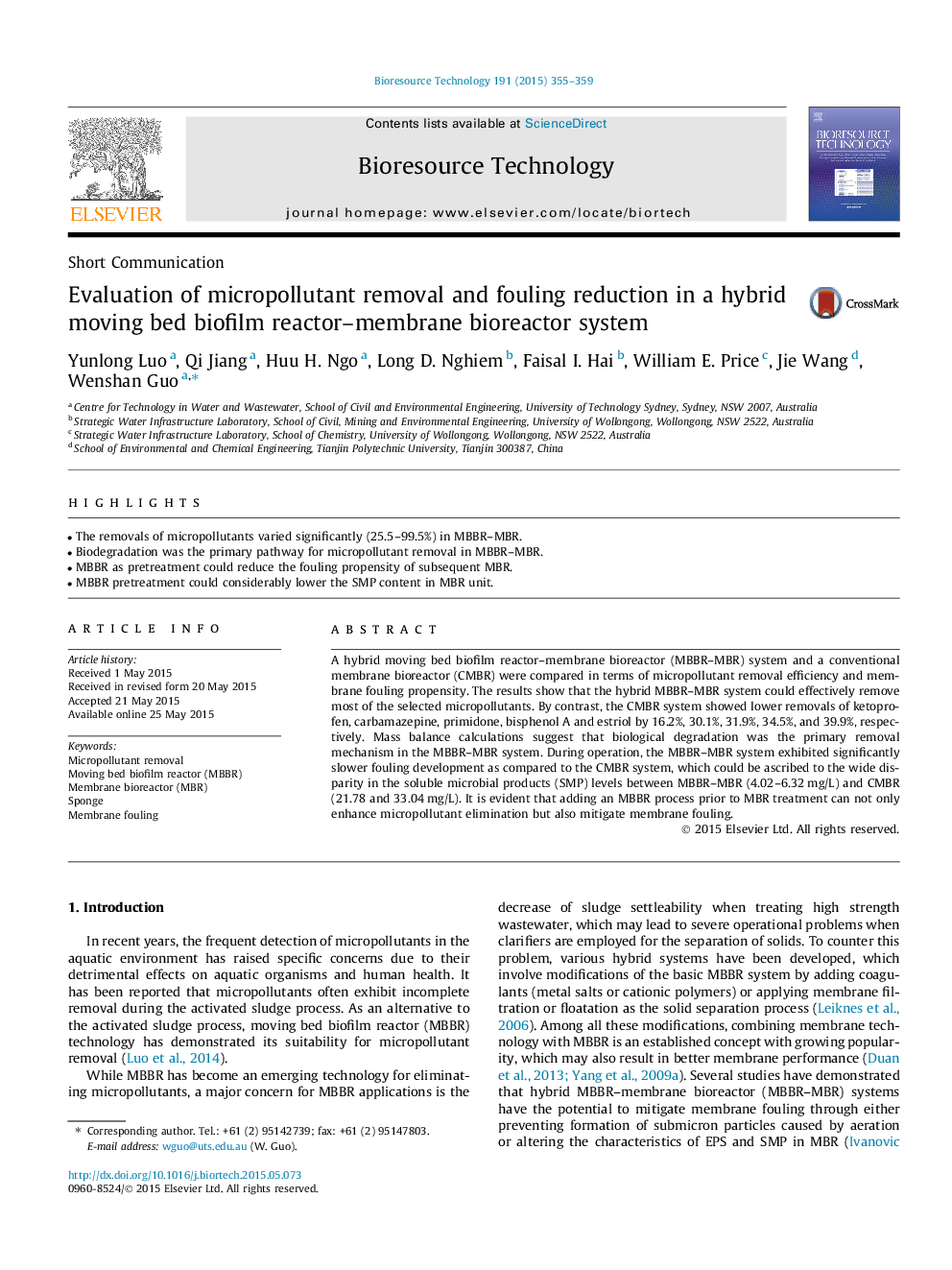| Article ID | Journal | Published Year | Pages | File Type |
|---|---|---|---|---|
| 679612 | Bioresource Technology | 2015 | 5 Pages |
Abstract
A hybrid moving bed biofilm reactor-membrane bioreactor (MBBR-MBR) system and a conventional membrane bioreactor (CMBR) were compared in terms of micropollutant removal efficiency and membrane fouling propensity. The results show that the hybrid MBBR-MBR system could effectively remove most of the selected micropollutants. By contrast, the CMBR system showed lower removals of ketoprofen, carbamazepine, primidone, bisphenol A and estriol by 16.2%, 30.1%, 31.9%, 34.5%, and 39.9%, respectively. Mass balance calculations suggest that biological degradation was the primary removal mechanism in the MBBR-MBR system. During operation, the MBBR-MBR system exhibited significantly slower fouling development as compared to the CMBR system, which could be ascribed to the wide disparity in the soluble microbial products (SMP) levels between MBBR-MBR (4.02-6.32Â mg/L) and CMBR (21.78 and 33.04Â mg/L). It is evident that adding an MBBR process prior to MBR treatment can not only enhance micropollutant elimination but also mitigate membrane fouling.
Keywords
Related Topics
Physical Sciences and Engineering
Chemical Engineering
Process Chemistry and Technology
Authors
Yunlong Luo, Qi Jiang, Huu H. Ngo, Long D. Nghiem, Faisal I. Hai, William E. Price, Jie Wang, Wenshan Guo,
